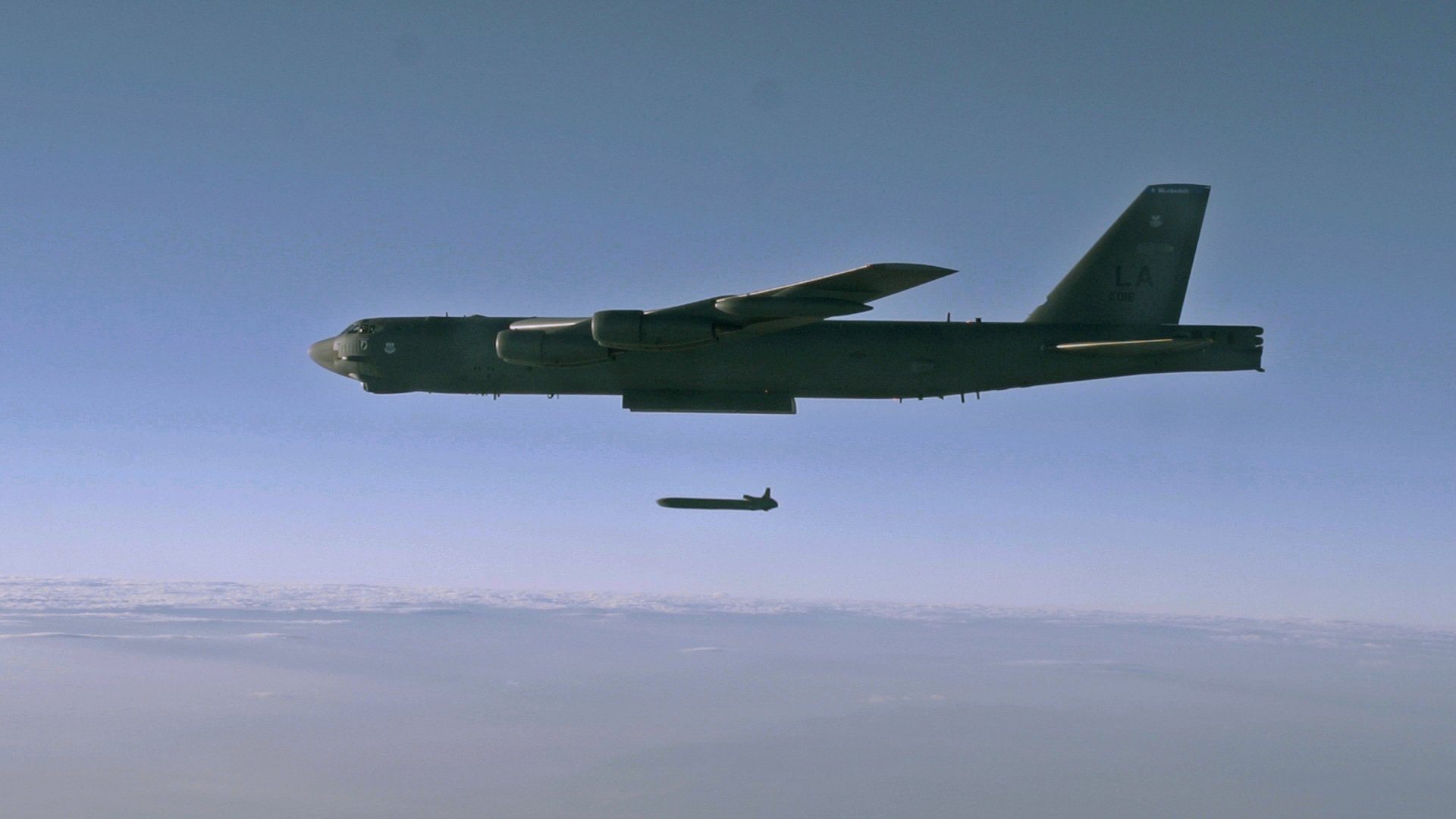Air Force Global Strike Command’s 2nd Bomb Wing and Air Combat Command’s 49th Test and Evaluation Squadron conducted an extensive evaluation exercise Dec. 8 to determine the bomber force’s ability to configure, load, fly and deliver an unarmed version of one of the Air Force’s long-range standoff weapons: the AGM-86B nuclear-capable air-launched cruise missile.
The Nuclear Weapon Systems Evaluation Program, or NucWSEP, is a stockpile-to-target evaluation of a nuclear weapon system designed to provide U.S. Strategic Command valuable data used in deciding stockpile requirements and for operational planning.
“The U.S. nuclear deterrent is foundational to our national security, and strategic weapons tests such as this demonstrate the readiness of our nation’s nuclear triad and serve to assure our allies and deter our potential adversaries,” said Brig. Gen. Andrew Gebara, USSTRATCOM deputy director for nuclear operations. “Exercises, weapons tests and operations are an important part of validating that our deterrence force is safe, secure, effective and credible, 24 hours a day, seven days a week.”
“Credibility is the cornerstone of deterrence,” said Lt. Col. Joseph McKenna, 2nd Operations Group deputy commander. “The 2nd Bomb Wing, in close coordination with our 49th TES mission partners, conducts these evaluations to provide an end-to-end assessment of this capability while instilling confidence in the safety, security and effectiveness of the nation’s nuclear deterrent.”
“While 49th TES personnel oversee the overall mission, including the installation and operation of the testing equipment, every evaluated portion of the mission is carried out by certified personnel from the tasked bomb wing,” said Maj. Stephen Catalano, 49th TES Nuclear Test Division commander.
The process to conduct such a weapons test has been underway for months.
After the 2nd BW was selected to perform the NucWSEP, 2nd Munitions Squadron Airmen got to work. A primary and back-up missile were randomly selected from the stockpile and checked to ensure that all test requirements were up-to-date.
Once the missiles had been validated, they were loaded onto a Common Strategic Rotary Launcher and prepared for the mission. The 49th TES then installed instrumentation equipment into both the primary and secondary missiles.
After all the items were installed and the tests completed, the launchers were loaded onto two B-52 Stratofortresses by a certified weapons load team. After takeoff, the aircrew flew the B-52 to the Utah Test and Training Range and launched the weapon, striking the target.
“We are committed to the strategic deterrent force, and sustainment and modernization of our nuclear deterrent force. These tests demonstrate our commitment to our allies and partners. Our security – and theirs – is non-negotiable,” Gebara said.
The AGM-86B is a standoff weapon designed to be launched from outside of a combat area, allowing aircrews to accurately strike distant targets without exposing themselves to enemy fire. With aerial refueling, a B-52 can bring this capability anywhere in the world within hours.
For 2nd Bomb Wing personnel who took part in the evaluation, the opportunity to launch a nuclear-capable missile drove home the importance of their mission.
“These missions directly validate, to ourselves and our allies, our nuclear capabilities and that we can strike whenever we need to,” said Tech. Sgt. Eric Martin, 2nd MUNS missile maintenance NCO-in-charge. “To me, this is very important because we don’t get to see the end results of the weapon systems we work on very often. NucWSEP missions not only show our enemies what we can do, but also show our Airmen how their hard work culminate in mission success. It gives the entire cruise missile flight a sense of pride knowing what we do matters.”










